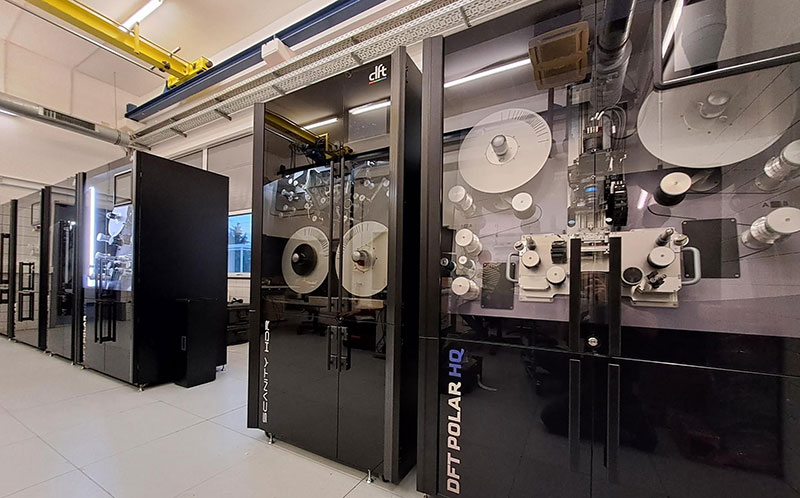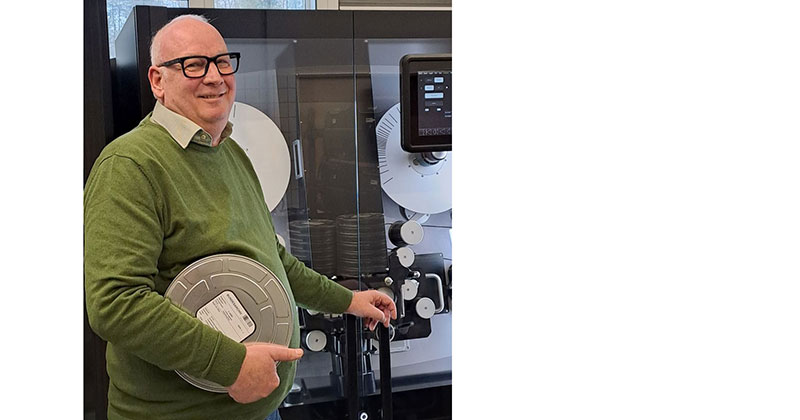Germany’s National Film Archive has installed a film digitisation facility in Berlin that centres on six DFT film scanners specialised in high-resolution, HDR and WetGate processing.

Germany’s National Film Archive, Bundesarchiv, has recently commissioned and installed a film digitisation facility at its Film Archive in Berlin-Hoppegarten. At the centre of the workflow in this new facility are six film scanners from Digital Film Technology (DFT), which work in combination with processes supporting film restoration, colour-correction and storage, to digitize the Bundesarchive’s large historical original inventory.
The installation includes three Scanity HDR scanners and three DFT POLAR HQ scanners, all equipped with DFT’s WetGate processing – making this the largest installation of DFT technology in the world.
DFT Scanity HDR film scanners are considered an industry standard for fast and high-quality digitisation. Scanning at 4K, the essential format today, and using patented HDR processing, these scanners work at a very high speed, capturing data from dense black and white materials and colour film stocks.
Alongside Scanity HDR, DFT POLAR HQ film scanners also address the specific needs of film archives. They are developed specifically for archives and facilities handling delicate or damaged film materials for digitisation at resolutions beyond the industry norm. Using DFT POLAR HQ, Bundesarchiv becomes the first archive in Europe to have the ability to digitise very fragile 16mm and 35mm films up to 8K resolution.
WetGate Processing
The facility also benefits from DFT’s ‘WetGate’ system, a fluid tank that the film passes through. Any surface imperfections, such as scratches, are filled with fluid at the point of scanning. The process can be used for film formats from 8mm up to 35mm. DFT has also customised a Central Supply Unit for the supply of the liquids to the six scanners from a central storage location for this project for Bundesarchiv. DFT’s WetGate technique saves a significant amount of time and effort in the restoration stage.
Bundesarchiv houses the central German film archive and is one of the largest film archives in the world, storing over 1.1 million film rolls and around 210,000 film titles. The archive includes German films of all genres including newsreels, animated films, documentaries and feature films – including the oldest publicly performed film from 1895, but also the current winners of the German Film Prize. Titles from the years 1930 to 1945, cinema newsreels ‘Kinowochenschau’ (post-1945) and films from the GDR are also held.

Marlo Boelens, Head of department AT3 that manages the entire Film archive
With the new digitisation facility, Bundesarchiv can restore and digitize motion picture film up to 8K resolution and it is estimated that around four petabytes per year can now be saved digitally, corresponding to around 2,300 film titles per year.
Like No Other Medium
Michael Hollmann, President of the Federal Archives, said, “Like no other medium, film depicts contemporary stories and thus contemporary history. Protecting films and making them available for use requires special efforts because of the often fragile and difficult-to-access media. We are now addressing the issue and taking film digitization to the latest technical level. In this way, we set standards for the protection of this valuable cultural heritage.”
Marlo Boelens, Head of department AT3 that manages the entire Film archive, said, “Digitizing such a large, valuable, precious and complex film archive requires an optimal workflow that is strictly defined and organized on standards. We have ensured that the entire process chain takes all the concerns of each individual title into account and have incorporated our experience into an efficient process. All devices are connected to the central server room via fibre optic cable and can send and retrieve data in real time.”
Michael Schneider, Chief Sales Officer at DFT, said his company regards the opportunity to be part of this prestigious project as a privilige. Bundesarchiv’s technical requirements were challenging. “However, they enabled us to ‘raise the bar’,” he said, “setting new high standards in film scanning and workflow for film digitization. DFT’s scanners and the installed storage area network make the system at Bundesarchiv one of the most efficient and powerful installations in the world.” dft-film.com



